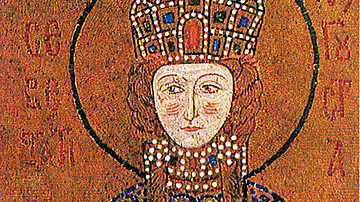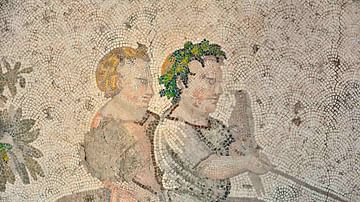Search Articles
Browse Content (p. 113)

Article
Women in the Byzantine Empire
Women in the Byzantine Empire (4th to 15th century CE) were, amongst the upper classes, largely expected to supervise the family home and raise children while those who had to work for a living did so in most of the industries of the period...

Article
Female Gladiators In Ancient Rome
Female gladiators in ancient Rome – referred to by modern-day scholars as gladiatrix – may have been uncommon but they did exist. Evidence suggests that a number of women participated in the public games of Rome even though this practice...

Article
The Great Palace of Constantinople
The Great Palace of Constantinople was the magnificent residence of Byzantine emperors and their court officials which included a golden throne room with wondrous mechanical devices, reception halls, chapels, treasury, and gardens. In use...

Article
Viking Age Greenland
Greenland was drawn into the Viking Age and settled by Norse Vikings in the late 980s CE, their presence there lasting into the 15th century CE. Despite its ice-riddled geography, the Norse managed to carve out a living for themselves in...

Article
The Egyptian Afterlife & The Feather of Truth
Is it possible to have a heart that is lighter than a feather? To the ancient Egyptians it was not only possible but highly desirable. The after-life of the ancient Egyptians was known as the Field of Reeds, a land just like what one knew...

Article
Byzantine-Armenian Relations
The relationship between the Byzantine Empire and ancient Armenia was a constant and varied one with an equal mix of wars, occupations, treaties of friendship, mutual military aid, and cultural exchange. Regarded as a vital defence to the...

Article
The Early Christianization of Armenia
The Christianization of Armenia began with the work of Syrian apostles from the 1st century CE and was boosted in the early 4th century CE by such figures as Saint Gregory the Illuminator, who converted the Armenian king and spread the gospel...

Interview
Interview: Metsamor Archaeological Site
Metsamor, which is located 32 km (20 mi) west of Yerevan, Armenia is one of the most interesting archaeological sites in the Caucasus. While first settled and founded as a Bronze Age city, people continuously inhabited Metsamor through Urartian...

Article
Viking Raids in Britain
The Viking raids and subsequent settlements define the period known as the Viking Age in Britain which had profound consequences on the development of the culture and language. The raids started in June of 793 CE when three ships docked at...

Article
Early Christianity
Emerging from a small sect of Judaism in the 1st century CE, early Christianity absorbed many of the shared religious, cultural, and intellectual traditions of the Greco-Roman world. In traditional histories of Western culture, the emergence...